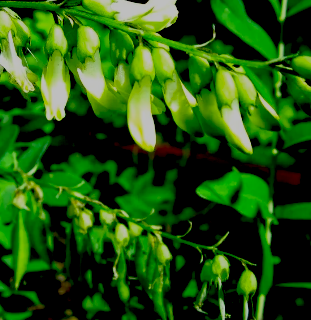Tropical Garden Grow Guide
Where you are the student and the teacher

| Botanic name: |
Astragalus membranaceus |
| Family |
Fabaceae |
| Plant type: |
Perennial |
| Sun exposure: |
Partial shade to full sun |
| pH |
6.0-7.5 |
| Soil preference: |
Sandy, well-drained soil |
| Sowing depth and distance |
1/4 " deep every 5" to 6". After3" tall thin to 12-18" apart |
Plant
of the Month September 2024
ASTRAGALUS
by Mary Loan
This
month we are venturing off the usual backyard edible
plants and herbs to explore growing and using a
medicinal plant, astragalus, an adaptogen plant that
is used as a supplement to treat many conditions. It
takes at least two years for the plants to grow a
strong enough root system for harvest. Before
purchasing seeds, plants or preparations made with
astragalus it is advised to research your seed source
to ensure that they are from safe and reliable. Plant
People sells astragalus products that are made
with organic U.S. farmed ingredients.
Astragalus
is a large genus of over 3,000 species of herbs and
small shrubs belonging to the Fabaceae family. We are
focusing on the perennial plant variety Astragalus
membranaceus, which is also known as milkvetch. Native to
China and Korea, astragalus has been grown and used
for many centuries in traditional Chinese medicine
preparations. Many
varieties are grown in the temperate regions of the
Northern Hemisphere.
Once you
secure the seeds that you have researched to be safe,
follow these growing instructions:
Weed and
break up the top surface of the soil where you want
the plants to grow.
Partial shade to full sun is best. Sandy well
drained soil with a pH of 6.0 – 7.5 is recommended.
Soaking the seeds overnight or nicking them before
planting help the seeds to sprout. Sow seeds ½
inch deep every 5”- 6“, then thin the plants once they
are about 3” high and space them 12” to 18” apart. Be sure to
water the seeds after planting; as they develop hairy
stems with small leaflets of the branches and flowers
on the branches, water the plants to keep the soil
from drying out.
In two
or more years the yellow fibrous root of the plant are
ready for harvest to dry and process into dried
chopped up pieces or shaved from the larger roots
which are said to resemble a flat tongue depressor. The roots
have a sweet earthy flavor and can be made into teas
or soups. Be
sure to read and follow directions carefully for
processing the root.
Astragalus
roots
contain flavonoids and polysaccharides, amino acids
and trace minerals.
The processed plant roots are said to support
respiratory, kidney and liver functions, help with
digestive health, stabilize blood sugar and help cope
with stress by building a strong immune system. There is a
lot of information about the benefits of astragalus
on-line which is advisable for you to read. Astragalus
is grown by herbalists and home gardeners in many
temperate countries, including Belize.
In the
event you are not a home herbalist that feels secure
making any potion you can still enjoy the lovely
blooming perennial plant that adds diversity to your
garden.
Please
note: Some varieties of astragalus are toxic to farm
animals Astragalus membranceus is reportedly not
toxic to livestock or humans and is safe as long as
it is properly prepared. .